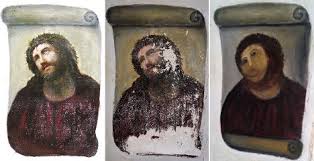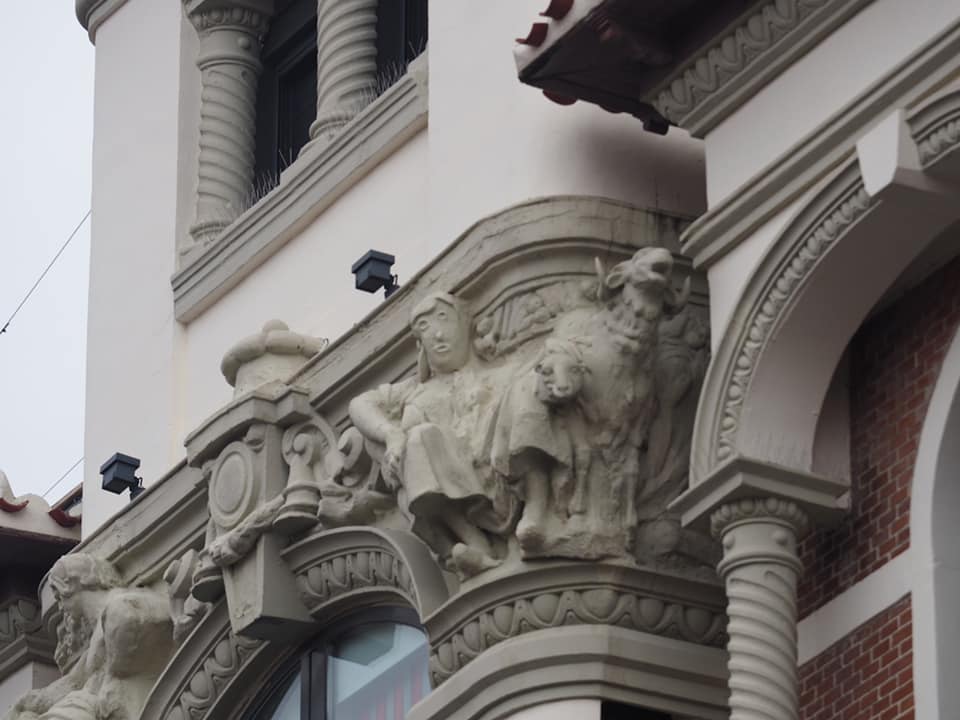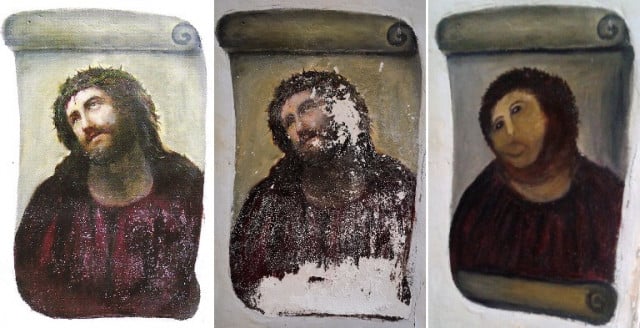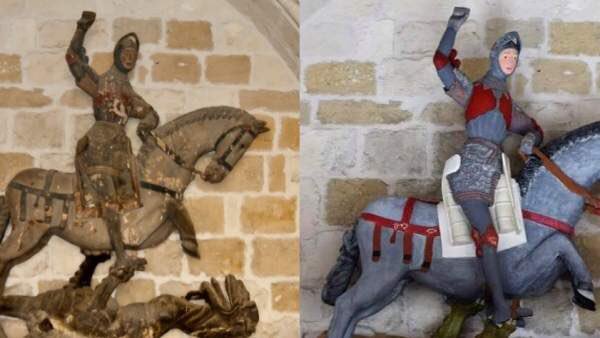Two antique dealers in Zaragoza made the discovery of what they believe to be the original painting by Elias García Martinez, used by the artist as a study for the mural in the chapel in Borja.
“It is not a sketch but a finished work, what the Italians call a ‘modelo’,” Ricardo Ostalé, who along with David Maturén owns an art gallery in Zaragoza, explained to local paper, the Heraldo de Aragon.
Dos anticuarios hallan el original que inspiró el #eccehomo de #Borja https://t.co/891XGRCqBQ #pintura #arte pic.twitter.com/75rSzNzblV
— Heraldo de Aragón (@heraldoes) November 17, 2016
It means there is now a faithful representation of how the fresco appeared before it was transformed by the disastrous amateur restoration.
The oil painting measuring 55cm by 45cm is signed by the artist and dated a year before the fresco was painted on the wall of the Sanctuary of Our Lady of Mercy in Borja.
“It is dated 1894, just a year before the fresco was painted on the wall of the chapel,” said Ostalé, who said it was likely that the painting stood beside the artist as a model while he reproduced the image stroke by stroke onto the wall.
The artwork was discovered in the private collection of a local art lover this week and will be displayed alongside the botched restoration that has attracted hundreds of thousands of visitors since it made international headlines in the summer of 2012.
The fresco attracted little attention beyond that of parishioners in Borja until Cecilia Giménez, now 86, picked up her paint brush and attempted to restore the peeling fresco to its former glory.
At first her botched creation drew criticism from church authorities and art historians who decried the ruination of the 19th century artwork but it quickly became an internet sensation and changed the fortunes of a town once crippled by the economic crisis.
Originally called Ecce Homo – Behold the Man – the image quickly won the sobriquet “Ecce Mono” – Behold the Monkey – and was reproduced on T-shirts, souvenir mugs and wine labels.
The story has now been made into an opera that was staged in the town in August.
The art dealers insist the painting is not for sale but has already attracted interest from art collectors around the world.
“The painting should stay in Borja,” explained Ostalé. “It could be exhibited in the sanctuary next to that of Cecilia Giménez. At the moment, Borja’s Ecce Homo is one of the most visited paintings in the world and, in that sense, it is one of the most genuinely popular works we have in Spain.”






 Please whitelist us to continue reading.
Please whitelist us to continue reading.
Member comments